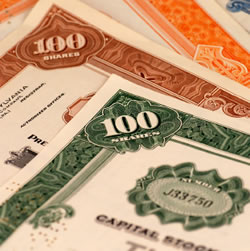By CYNTHIA LIN
Investors hid out in safe-haven Treasurys on Friday as the euro zone’s credit crisis worsened and United States President Barack Obama offered little policy guidance in a speech the night before, pushing benchmark yields comfortably below the 2% mark.
Benchmark 10-year notes briefly hit a new historic low of 1.894% after European Central Bank chief economist Juergen Stark said he would resign at the end of the year, reportedly due to friction over the bank’s controversial bond-buying program aimed at supporting the euro zone’s weaker members. That was a bleak reminder that the region’s debt dilemma is far from being resolved, and it sent investors into the safety of U.S. government debt.
“The market’s reaction to the resignation of Stark shows how jittery and how sensitive we are to events in Europe,” said Eric Green, chief U.S. rates strategist at TD Securities. “One thing is clear: Events in Europe will get worse before they get better.” He said it wouldn’t be surprising to see 10-year yields drop below 1.5% before the end of the year, a level that would have seemed unbelievable just a few months ago.
In late-afternoon trading, benchmark 10-year notes rose 20/32 in price, sending yields down about seven basis points to 1.918%. The 30-year bond gained 1 5/32 as yields fell six basis points to yield 3.254%. Two-year notes rose 1/32 to yield 0.173%. Bond prices and yields move inversely.
The price action pushed the amount of extra yield required on 10-year notes over two-year notes to about 1.74%, down from more than 2% a month ago. This falling premium reflects what’s known as a flattening yield curve, something that traditionally signals economic weakness and could spur more calls for support from the Fed.
The revived euro-zone sovereign debt crisis fears also fired up more demand for safe-haven German bunds. The yield on benchmark 10-year bunds hit a new all-time low Thursday at 1.78%. At the same time, the cost to insure Greek debt from default soared, with the nation’s five-year credit default swap blowing out to more than 3,000 basis points, according to Markit.
In the U.S., Treasurys week of gains followed last Friday’s disappointing U.S. employment report that sparked fears about whether the country is slipping back into a recession. Since then, frustrated investors have turned to U.S. policymakers for direction, putting President Obama and Federal Reserve Chairman Ben Bernanke’s speeches Thursday under intense scrutiny.
The Fed chief ended up reiterating his comments from his Jackson Hole, Wyo., speech last month that the central bank stands ready to act with its wide range of tools to bolster the economy, deflating some of the optimism built up in equity markets that he might offer a stronger signal that the Fed will commit to more stimulus at its Sept. 20-21 meeting.
Rapidly growing expectations that the Fed will implement Operation Twist—a stimulus tool where the central bank buys longer-dated Treasurys with the proceeds of selling its already-owned shorter-dated debt—helped the longer end of the curve outperform Friday. Most analysts suspect the bulk of the buying would be concentrated in the 7-year to 10-year space.
Meanwhile, Obama presented a $447 billion stimulus package through tax cuts and spending initiatives. While that size was larger-than-expected and sparked initial optimism, the plan didn’t provide much detail and still faces the daunting task of getting passed in Congress.
“Obama’s speech was more ideology, without any meat,” said Joe Burke, interest-rate risk manager at Interactive Brokers Timber Hill. “It only provided part of the puzzle.”









